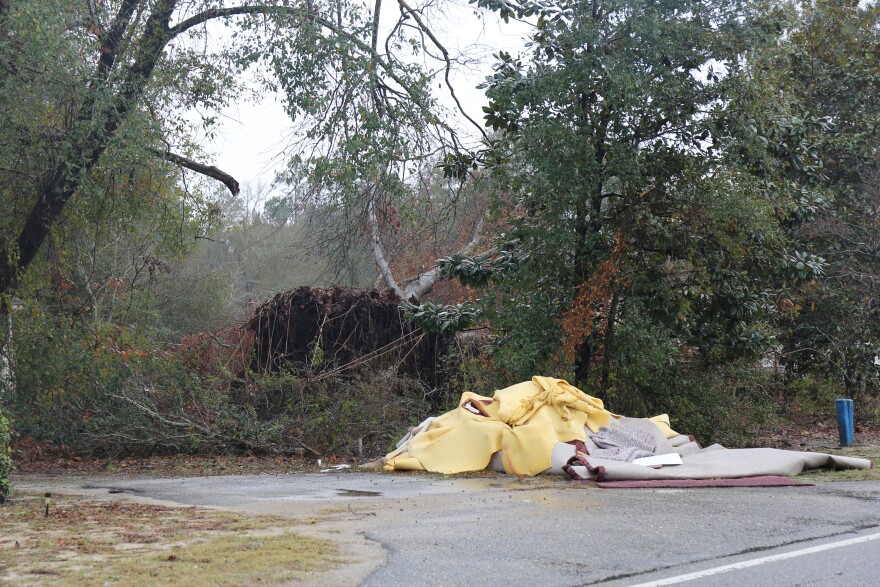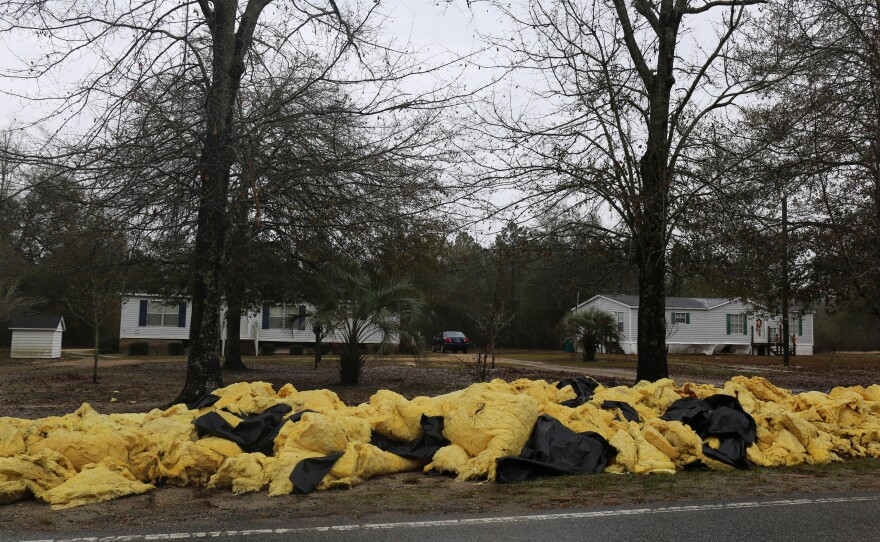Hurricane Matthew brought considerable damage and devastation across the east coast, but it’s hard to find a town affected more than Nichols, South Carolina. A month after the storm, debris was piled up so high along the roads that it was like driving through a tunnel. Today, nearly three months after the storm hit, most of that debris is gone, but the damage can still be seen. Every house has damage and there’s not a single citizen in sight. The town feels empty, but it’s not abandoned. If you find someone to talk to, there’s a smile on their face. The town has started the rebuilding process and despite the look of things now, there’s one prevailing sentiment from everyone in the area: hope.

On the night of October 9th, the waters began to rise in Nichols, South Carolina. By the next morning, nearly every business and home in town had been flooded. 2 to 4 feet of water sat in houses for nearly a week in 90 degree temperatures, causing mold to form on what was left standing. One of the few buildings not affected by the flood that day was Nichols Town Hall. It offered hope to residents during the storm, as citizens huddled inside to ride out the weather. Now, nearly three months later, Nichols Town Hall remains a beacon of hope for everyone in the area, promising to not just get back to normal, but “back to normal in a better way.”
That’s the sentiment of County Clerk and Town Manager Sandee Rogers. She remains optimistic, but there’s a long and costly road ahead for the town. Residents had previously been told they didn’t need flood insurance, meaning most received no money for their home. Most turned to FEMA, but as Rogers explains, “FEMA is a limited amount of help. They’ve done a great job as far as what they can do, but it’s limited.” Further complicating matters is the age of the community. “We have an elderly community,” Rogers says.

“They did not have a lot of financial needs to begin with. So when FEMA gives them what they can use, it’s not enough to build these houses back.” To make matters worse, there is a standard height level that homes have to achieve according to FEMA requirements and a county ordinance. If home repairs cost more than 50% of the value of your home, homeowners are forced to elevate to meet the standards, which is a very costly expense. All of these complications are a scary reality for the entire town. Some residents have already made the decision to leave and many more could follow, resulting in a ghost town. This is an outcome that Sandee Rogers will not accept. “We’re gonna build this town back. We’re gonna make it better. It’s going to happen and as long as we keep that hope going we can make it happen.”

One of the many residents of Nichols that’s remaining hopeful is Harry Campbell. He’s lived in Nichols for fifty years and says of the flood, “It was just an experience I had never seen in my whole entire life.” Campbell and his wife’s house was completely flooded, and he’s started the repair process himself because he can’t afford to pay anyone else. The Campbells lost everything in the flood, but they’re not letting it dampen their spirits.
There have been positive things to come out of the storm, according to Harry Campbell. “The whole town has been encouraging each other and the whole town has come together to be so close-knitted now.” Neighbors he had never spoken to were now stopping by frequently to check in and talk. People from all over have been coming in to help the people of Nichols, something Campbell says has been, “a great blessing toward this town.”
Nichols is doing everything they can to help its people. The library in Town Hall has been transformed into a distribution center. On shelves where books used to sit, there are now canned goods, bottled water, clothes and more. Donations have poured in from all over the country. A Christmas raffle was held to give away new furniture. Doctors from Mcleod Hospital in Florence have turned one of the rooms in Nichols’ Town Hall into a doctor’s office, where they see patients weekly. Disaster relief teams like the United Methodists and Southern Baptists have come in to help fix homes. They strip down the houses, clean out the mold, and begin the rebuilding process. One of the biggest supporters of Nichols during their time of need has been Mullins, SC, a town that considers Nichols an extension of their own.

Mullins went to great lengths to help the people of Nichols get back on their feet. They set up shelters at their high schools for people to stay, set up various foundations, held car raffles, offered fire and police protection. Two accounts were set up to receive donations, one for Nichols and one for the whole of Marion County, with Marion County Health Care Foundation matching up to $100,000 in both. According to the Mayor of Mullins, Bo McMillan, the reason for helping is simple: “It’s the right thing to do.”

Mayor McMillan isn’t one to sugarcoat the severity of the devastation in Nichols. “Without significant help, Nichols will be a crossroads at best and at worst, a ghost town. And we don’t want to see that.” Through the help of people like those in Mullins, and the people from all across the country who have reached out a hand to Nichols, there is hope. Through the ongoing relief efforts, the light can be seen at the end of the tunnel. “I think the atmosphere, or the cloud of uncertainty that hangs over the area, is slowly but surely being erased by acts of love and generosity,” McMillan explains.
On December 30, just before the New Year, the U.S. Housing and Urban Development Department awarded South Carolina over $65 million in federal aid to help pay for the recovery of Hurricane Matthew. With targeted relief efforts, this could provide a huge step forward in getting Nichols back on its feet.











